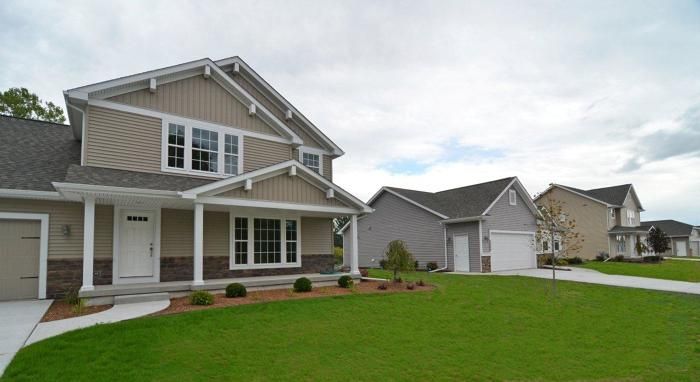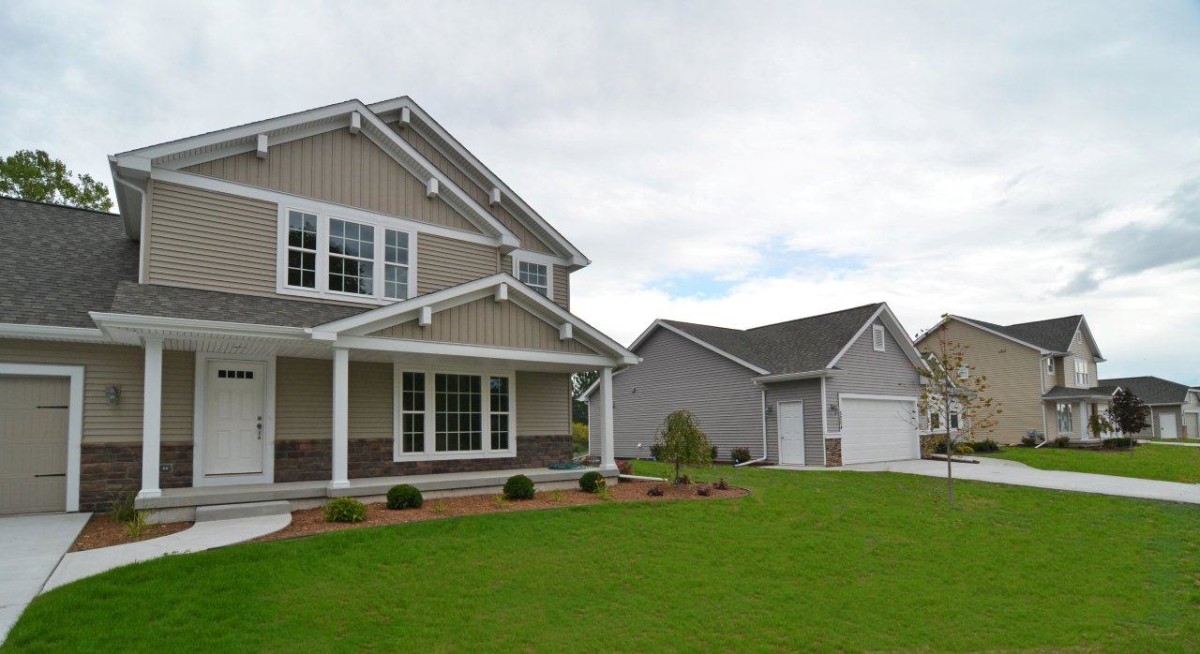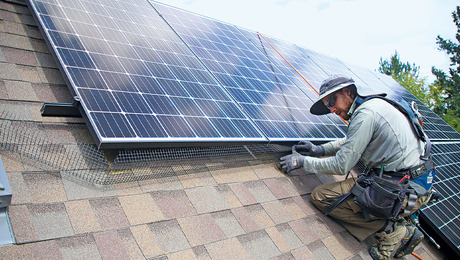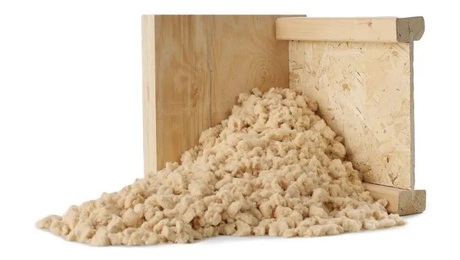
A Michigan builder is collaborating with Dow Building Solutions on a project to compare the performance of nearly identical homes built to different energy standards.
What Dow calls the Twelve Energy Efficiency Test Homes (TEETH) Project began in 2012 with the construction of 12 homes by Cobblestone Homes in Midland, Mich. These single-family test houses are divided into four groups, each with different insulation and air-sealing specs.
Built with similar solar orientations and comparable floor plans of roughly 3,000 sq. ft., the houses are alike in many ways except for insulation, air-sealing, heating-system efficiencies, and a few other details. Dow calls the community “the nation’s first active subdivision specifically designed to capture quantitative and qualitative data on building performance.”
Here’s how the houses stack up:
- Group 1: Baseline performance. These houses are built at a minimum cost to meet the 2006 International Energy Conservation Code (IECC). They have a HERS rating of 82, meaning they are 18% more energy efficient than a standard new home. Specs: attic insulation, R-38; above-grade walls, R-19; basement walls, R-10; no underslab insulation. Air infiltration, as measured in a blower-door test, is 6.5 air changes per hour at a pressure difference of 50 pascals (ACH50). That’s pretty leaky, but not uncommonly so.
- Group 2: 2012 Energy performance. This group meets requirements of the 2012 IECC at the lowest possible cost. The houses have an average HERS rating of 57 (43% more efficient than a typical new home). Specs: attic insulation, R-49; above-grade walls, R-19; basement walls, R-15; no underslab insulation. Air infiltration is 3 ACH50.
- Group 3: 2012 “Outperformance.” These houses meet 2012 IECC building-science best practices and have a HERS rating of 57. Specs: attic insulation, R-49; above-grade walls, R-21; basement walls, R-15; no underslab insulation. Air infiltration is 3 ACH50.
- Group 4: Beyond code, renewable ready. With HERS indices in the mid-40s, these houses exceed requirements of the 2012 IECC. Specs: attic insulation, R-61; above-grade walls, R-41; basement walls, R-20; underslab insulation, R-10. Air infiltration is 0.88 ACH50 (much tighter than an average new house).
Differences in mechanical systems
Each TEETH house has a monitoring system that captures 60 pieces of information every 15 minutes and transmits them directly to the Dow Building Science Laboratory. Data includes energy consumption as well as moisture and temperature readings inside the exterior walls.
The cost of insulation, air-sealing materials, exterior doors, windows, lighting, and HVAC equipment was segregated from other materials to make it easier to compare the benefits of added investments. These energy-related items ranged from a low of $25,166 in one of the group 1 houses to a high of $43,194 in one of the group 4 houses.
All of the houses are supplied with air-conditioning equipment with a seasonal energy-efficiency ratio (SEER) of 13. The forced-air, natural-gas-fired furnaces start with an annual fuel-utilization efficiency (AFUE) of 80. This goes up to 92 for the two middle groups and to 95 for group 4.
In the houses in groups 2 and 3, a continuously operating bathroom fan provides whole-house ventilation. The houses in group 4 have an energy-recovery ventilator. No mechanical ventilation is provided for the houses in group 1.
Dow will gather data from the houses for five years.
Selling high-performance is tough for builders
Cobblestone Homes owner Mark Wahl says that builders today don’t have “real-world” test results that would prove the value of investing in energy efficiency. He had worked with Dow on two net-zero-energy homes in the past, and the current project grew out of subsequent conversations with the company.
Says Wahl, “The Dow R&D folks were saying, ‘Mark, we don’t get it. When you build a high-performance house, it doesn’t cost more. It’s actually cheaper because when you factor in the payback, you’re far ahead.’ The problem is to put yourself in the builder’s shoes trying to sell that.
“The research is going to prove itself one way or another,” Wahl continues, “but my point was to make it real, have something that will assist the builder in showing the customer, ‘Hey, this isn’t just about green. This is about the performance of your home, a lower overall cost, a better-built home, a more-durable home.’ In the industry, we all want to say that, but do we have any accurate tests to show that?”
According to Wahl, the houses are “executive rentals” owned by a subsidiary of Cobblestone Homes called Rivertowne Properties. They likely will be leased to multiple occupants over the five-year span of the study. That should make it easier to spot consistent performance differences between the houses by making individual occupant behavior a little less important.
Anyone renting one of the houses will know it is part of a study, but nothing more. Dow has no ownership stake in the houses.
“My builder friends across the country have a hard time getting high-performance features sold in their homes,” Wahl says. “People won’t pay for them, and people won’t pay for them because they don’t understand what they’re getting. So the point of this project is to educate the builder and the client, and also the manufacturer. We couldn’t find anything in America done like this.”
Fine Homebuilding Recommended Products
Fine Homebuilding receives a commission for items purchased through links on this site, including Amazon Associates and other affiliate advertising programs.

Affordable IR Camera

8067 All-Weather Flashing Tape

Handy Heat Gun

A project in Michigan will measure performance differences in four groups of houses built to different energy specifications.



























View Comments
Quiet an informative article shared! Thanks for sharing.
http://brightchoicelighting.com/